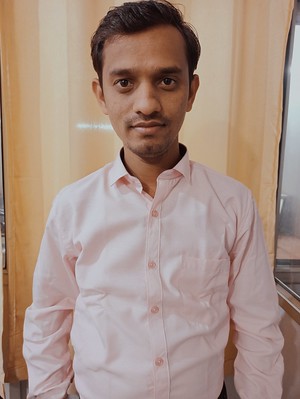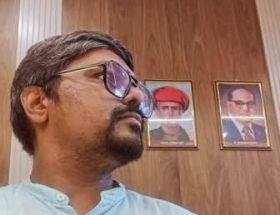Mayur Kudupale
 The Maharashtra government has initiated steps to change names of localities, awards and to remove the word ‘Dalit’. For changing the name of localities the government is attempting to remove the stigma attached to the names of the localities; it has also changed the name of award Dr Balasaheb Ambedkar Dalit Mitra Puraskar to Dr Babasaheb Ambedkar Samaj Bhushan Puraskar, while it has planned to use the word Scheduled Castes and Neo-Buddhists in place of ‘Dalit’ in official communications. Earlier, the National President of the Nationalist Congress Party (NCP) Sharad Pawar has expressed his displeasure over caste-based names of areas in public meetings. His party member Mr Dhananjay Munde, who is social welfare minister of Maharashtra, proposed all three changes in a cabinet meeting. Now, the cabinet has approved the proposal by Mr Munde. The chief minister has supported it by saying “the decision is in favour of social harmony and national unity”.
The Maharashtra government has initiated steps to change names of localities, awards and to remove the word ‘Dalit’. For changing the name of localities the government is attempting to remove the stigma attached to the names of the localities; it has also changed the name of award Dr Balasaheb Ambedkar Dalit Mitra Puraskar to Dr Babasaheb Ambedkar Samaj Bhushan Puraskar, while it has planned to use the word Scheduled Castes and Neo-Buddhists in place of ‘Dalit’ in official communications. Earlier, the National President of the Nationalist Congress Party (NCP) Sharad Pawar has expressed his displeasure over caste-based names of areas in public meetings. His party member Mr Dhananjay Munde, who is social welfare minister of Maharashtra, proposed all three changes in a cabinet meeting. Now, the cabinet has approved the proposal by Mr Munde. The chief minister has supported it by saying “the decision is in favour of social harmony and national unity”.
After a long period, the Government has shown a positive attitude but the society is not looking at it in a reformist manner. In this article, I have tried to engage with the reality of caste-based names of localities vis-a-vis the current decision of the government.
Rural and Urban localities
Dr Ambedkar and Periyar had a great disregard for village structure but in contrast, Gandhi had great respect for the villages. Periyar had found the need for a reconstruction of the village and Ambedkar was considering it a “sink of localism, a den of ignorance, narrow-mindedness and communalism”. Ambedkar’s statement came in the domination of the Gandhian era, but it is still applicable in rural India. Till date, most sociologists consider ‘village’ as a unit for understanding rurality. Within the village, there are several caste-based sub-units and localities which are known as Basti, Mohalla, Wada, Pura (in Maharashtra). Every Mohalla is associated with a caste-based notion and every locality has undeclared caste-based borders which are known to its members as well as non-members. Where I was born, there are still 11 caste localities surviving within their own ‘caste-territory’. In everyday discussions among men and women, the terms Dhangar Mohalla, Gond Mohalla, Kunbai Pura, Teli, Matang, etc are used instead of calling those localities by name. As per official records, there are no such caste-based localities, but they are part of everyday informal exchanges. ‘Twice-born’ caste localities have no caste-based names for their localities. In some cases, their localities’ names are not stigmatised.
In Maharashtra, urban spaces are not different from rural areas, lower-caste population is still living outside the so-called mainstream city localities. Twice-born have named their localities in a very sophisticated way e.g., Pandey layout, Deshpande layout etc. Urbanisation failed to establish the idea of urbanisation for everyone i.e. inclusive and non-discriminatory. The city structures are also developing like rural caste structures, although there is some level of mobility which does not exist in rural areas. Upper Shudra localities have better conditions, but their localities’ names have been kept under the Brahmanical curtain. In rural settings, Mohalla and Pura are used for the Non-Brahmin caste localities but in urban areas, ‘Peth’ is known for Brahmin localities like- Sadashiv Peth, Ganesh Peth, Ramdaspeth. Pune which is known for several Brahmin majority Peths. In urban spaces, the term Mohalla still exists to denote lower caste localities. Specific Scheduled Caste, Scheduled Tribe and OBC areas are known by their caste names. Although, the educated sections from the Scheduled Castes have already changed names of several areas to indicate their ideals: like Bhim Nagar, Phule Nagar.
Government decision and Ground realities
It is a positive decision but expecting that the decision will bring revolutionary changes in society is a false hope for the common masses. For them, the decision doesn’t matter because it is not going to impact their caste localities. Caste-based localities’ names are of unofficial recognition. It is very hard to derecognise them. Secondly, the Scheduled Castes’ population can easily adopt any ideal names as they have already started such initiatives, but what about Shudra, OBC and Brahmin localities? Will they change the localities’ names? Thirdly, the government has proposed some ideal names like Samata Nagar, Shahu Nagar, Kranti Nagar. But urban, educated and uneducated Scheduled Castes have already renamed their localities. Even after changing the localities’ names, outsiders still recognise them by their caste names.
In colonial and post-colonial India, Brahmin communities left villages in large numbers and settled in urban spaces. Peth is a well known term for Brahmin localities as well as new developments in cities which have names like Pande layout, Deshpande layout etc. Peth and other such names don’t seem caste-based but those localities always particularly belong to Brahmins and allied upper castes. Now the cabinet decision is not talking about these changes. Even if they decide to change, will they accept ideal names like ‘Bhim Nagar’ and ‘Ambedkar Nagar’ or any such names? Will the upper Shudra and OBC castes also accept changes? Will ruling party members campaign to convince the upper Shudra and OBC castes for changing their localities’ names?
The Brahmanical minds, always eager to know everyone’s caste, might not be interested in your work but caste will always be the point of highest interest for them. The decision is an intervention that deals with names but not with minds. Today caste is not just limited to names, it’s structured and this situation demands intervention for the betterment of society.
No positive response from society
After the announcement of the decision, only the media was interested in covering the news but society was on a silent mode. The silence was/is not as opposed to the decision but it reflects that the larger masses are not interested in such ‘Social Justice’. Also, such decisions are not going to impact them structurally. Scheduled Castes’ people are already living in localities which they have renamed to indicate their ideals. On the other hand, other backward castes’ perceptions are not clear. In the case of Brahmin and other upper-caste groups, they are living in areas with Brahmanical names, which are not going to change. Overall the Maharashtra government decision won’t bring any positive or radical reform. NCP is trying to capitalize change her Brahmanical image but looking at the ground realities, it is not going to help the party too much.
~~~
Mayur Kudupale is a student of TISS. His areas of interest are caste, social inequality, and mental health.









